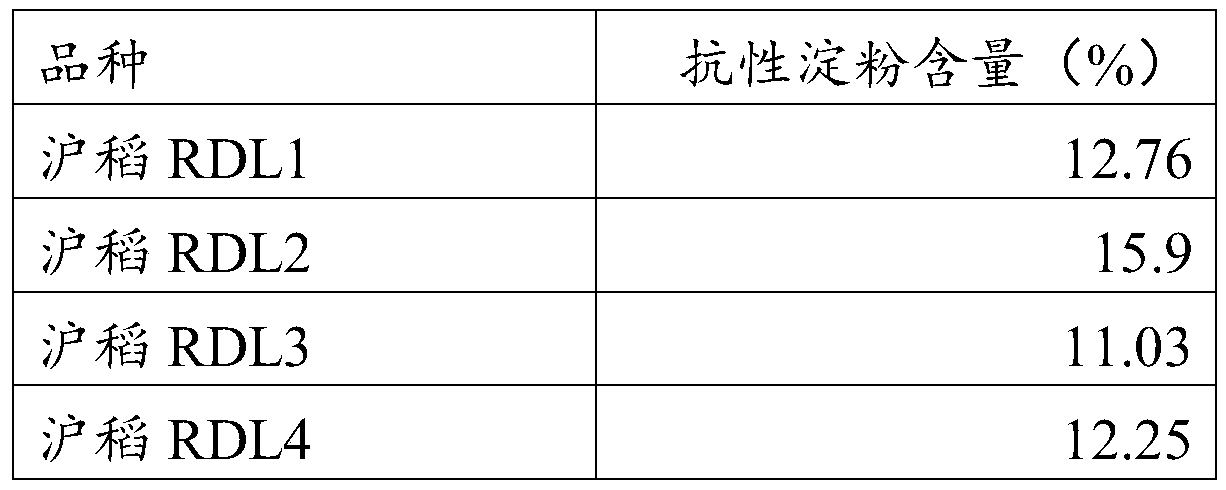Breeding method of rice variety high in resistant starch and low in gluten polymerization
A technology of highly resistant starch and resistant starch, which can be applied in the fields of botanical equipment and methods, biochemical equipment and methods, and microbial determination/inspection, etc., can solve problems such as increasing the burden on kidneys, and achieve the effect of important application value
- Summary
- Abstract
- Description
- Claims
- Application Information
AI Technical Summary
Problems solved by technology
Method used
Image
Examples
Embodiment 1
[0078] Example 1 Breeding method - preferential selection of low gluten genotype homozygous
[0079] (1) In the winter of 2016, Hainan, using Youtangdao No. 2 (about 13% of resistant starch content; about 5.6% of glutenin content) , the resistant starch content is about 0.46%) is the parent II, and the F1 generation seeds are obtained by crossing.
[0080] (2) In the spring of 2017, in Shanghai, the F1 generation was backcrossed with the parent II to obtain BC1F1 generation seeds.
[0081] (3) In the winter of 2017, Hainan, sowed BC1F1 in the field, took samples, extracted DNA, and screened for resistant starch sbe3-rs genotype heterozygosity and low gluten through the detection of high resistant starch CAPS molecular marker and low gluten protein KASP molecular marker Individual plants homozygous for the Lgc-1 genotype were mixed and harvested to obtain BC1F2 seeds.
[0082] (4) In the spring of 2018, BC1F2 generation was planted in Shanghai, samples were taken, DNA was ex...
Embodiment 2
[0084] Example 2 Breeding method of the present invention - preferential selection of resistant starch genotype homozygous
[0085] (1) In the winter season of 2016, Hainan, using Youtangdao No. 2 (same as Example 1) as parent I, and Japanese low gluten variety LGC-1 (same as Example 1) as parent II, hybridized to obtain F1 generation seeds (same as Example 1) Embodiment 1 step 1).
[0086] (2) In the winter and spring of 2017, in Shanghai, the F1 generation was backcrossed with the parent I to obtain BC1F1 generation seeds. The BC1F1 generation seeds were ground into brown rice, and the chalkiness of grains greater than 70% was selected according to the appearance, planted in Hainan, sampled, and DNA extracted. Through the detection of high resistant starch CAPS molecular markers and low gluten protein KASP molecular markers, single plants homozygous for sbe3-rs genotype and heterozygous Lgc-1 genotype were screened, and BC1F2 generation seeds were obtained by mixing and ha...
PUM
 Login to View More
Login to View More Abstract
Description
Claims
Application Information
 Login to View More
Login to View More - R&D
- Intellectual Property
- Life Sciences
- Materials
- Tech Scout
- Unparalleled Data Quality
- Higher Quality Content
- 60% Fewer Hallucinations
Browse by: Latest US Patents, China's latest patents, Technical Efficacy Thesaurus, Application Domain, Technology Topic, Popular Technical Reports.
© 2025 PatSnap. All rights reserved.Legal|Privacy policy|Modern Slavery Act Transparency Statement|Sitemap|About US| Contact US: help@patsnap.com



